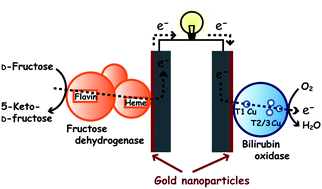Direct electrochemistry of bilirubin oxidase on three-dimensional gold nanoparticle electrodes and its application in a biofuel cell†
Abstract
We examined the direct electron transfer (DET) reaction of

- This article is part of the themed collection: Biofuels

 Please wait while we load your content...
Please wait while we load your content...